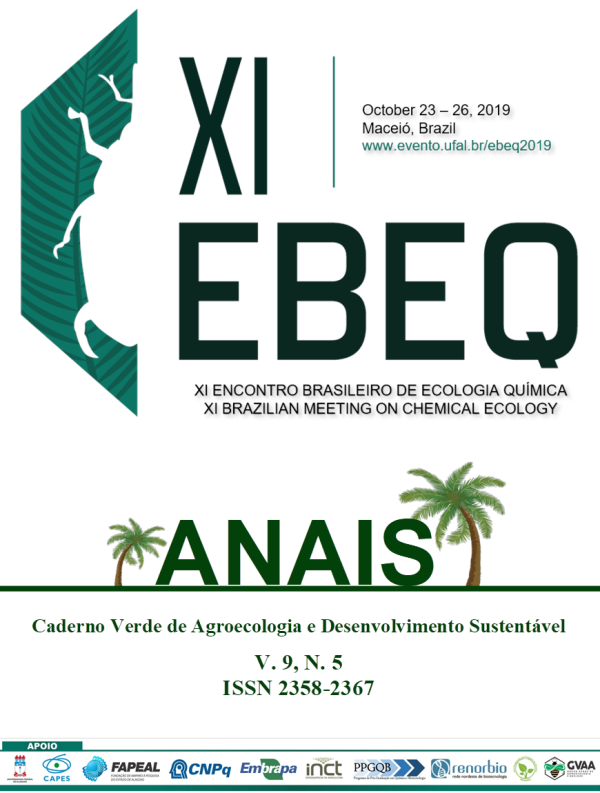ON WHAT FOREST INSECT POPULATION STUDIES NEED FROM THE CHEMICAL ECOLOGIST.
Resumo
Studies on the population ecology of insects require precise estimation of their abundance. Identifying the processes that drive population dynamics is a key question of ecological research, which is becoming increasingly significant due to the observed changes in climate and landscape configuration. When insects become pests, as economic damage if typically a function of population numbers, an accurate estimation protocol is critical to loss prevention. To estimate population size through time, sampling protocols that are deployed should not only provide reliable data, but should also be affordable and readily available. The problem then arises when populations are in low numbers, as is often the case with many forestry pests or when alien species recently arrive or spread into new areas, because the effort needed for detecting individuals can exceed available resources. In this sense, the identification of compounds to which individuals reliably respond can provide a specific sensitive tool. I illustrate this by presenting the case of thewoodwaspSirexnoctlio in southern Argentina. The species displays pulse-like outbreak dynamics, remaining for long periods in low population numbers. I will describe the rationale behind the need for more sensitive methods for this species, and very briefly our progress in the arena. I will highlight the importance of increasing our knowledge on the chemical ecology of this species and other forest pests,to track their population dynamics and consequently contribute to a better understanding of their population ecology and to prevent economically significant damage.Downloads
Publicado
Como Citar
Edição
Seção
Licença
Termo de cessão de direitos autorias
Esta é uma revista de acesso livre, em que, utiliza o termo de cessão seguindo a lei nº 9.610/1998, que altera, atualiza e consolida a legislação sobre direitos autorais no Brasil.
O(s) autor(es) doravante designado(s) CEDENTE, por meio desta, publica a OBRA no Caderno Verde de Agroecologia e Desenvolvimento Sustentável, representada pelo Grupo Verde de Agroecologia e Abelhas (GVAA), estabelecida na Rua Vicente Alves da Silva, 101, Bairro Petrópolis, Cidade de Pombal, Paraíba, Brasil. Caixa Postal 54 CEP 58840-000 doravante designada CESSIONÁRIA, nas condições descritas a seguir:
O CEDENTE declara que é (são) autor(es) e titular(es) da propriedade dos direitos autorais da OBRA submetida.
O CEDENTE declara que a OBRA não infringe direitos autorais e/ou outros direitos de propriedade de terceiros, que a divulgação de imagens (caso as mesmas existam) foi autorizada e que assume integral responsabilidade moral e/ou patrimonial, pelo seu conteúdo, perante terceiros.
O CEDENTE mantêm os direitos autorais e concedem à revista o direito de divulgação da OBRA, com o trabalho simultaneamente licenciado sob a Licença Creative Commons do tipo atribuição CC-BY.
O CEDENTE têm autorização para distribuição não-exclusiva da versão do trabalho publicada nesta revista.
O CEDENTE têm permissão e são estimulados a publicar e distribuir seu trabalho online (ex.: em repositórios institucionais ou na sua página pessoal) a qualquer ponto antes ou durante o processo editorial, já que isso pode gerar alterações produtivas, bem como aumentar o impacto e a citação do trabalho publicado.










